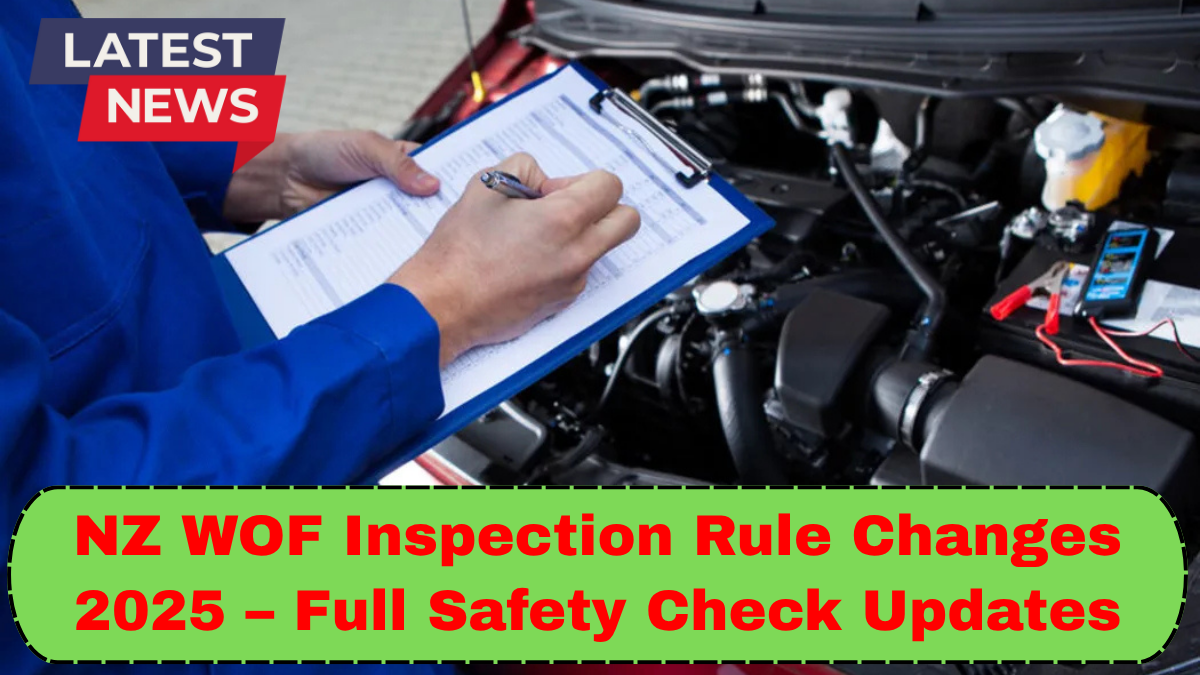The NZ WOF Inspection Rule Changes 2025 are set to bring significant modifications to how vehicles are evaluated for roadworthiness. These updates mark the most comprehensive overhaul in decades, aiming to align New Zealand’s vehicle safety standards with modern technology, environmental goals, and international best practices.

Why the Changes Are Happening
The current warrant of fitness (WOF) system in New Zealand has remained largely unchanged for years. However, the evolution of automotive technologies and increasing environmental concerns have prompted the New Zealand Transport Agency (NZTA) to revise and expand inspection requirements.
The primary drivers for the 2025 rule changes include:
- Increased road safety through early detection of vehicle faults
- Environmental sustainability, particularly emissions control
- Adapting to newer vehicle technologies such as electric and hybrid systems
- Streamlining inspections for better efficiency and consistency across providers
Key WOF Inspection Updates in 2025
The new WOF requirements introduce several technical and procedural enhancements. Here are the most notable changes vehicle owners and inspectors need to know:
1. Enhanced Emissions Testing
One of the most prominent updates is the mandatory emissions test for all vehicles registered after 2009. The goal is to reduce air pollution and ensure compliance with global emission benchmarks. Vehicles that fail this test will not receive a WOF until necessary repairs are made.
2. Mandatory Safety Feature Checks
New safety systems like Autonomous Emergency Braking (AEB), Lane Keeping Assist (LKA), and Tyre Pressure Monitoring Systems (TPMS) are now part of the inspection checklist. For vehicles equipped with these features, functionality tests will be mandatory. Faulty systems must be repaired before passing the WOF.
3. Structural Integrity and Rust Assessment
The inspection process will place greater emphasis on underbody corrosion and frame damage. Surface rust may no longer be ignored if it appears on structural components. Inspectors are now required to use probing tools and, in some cases, photographic documentation to support their assessments.
4. EV and Hybrid-Specific Inspections
With the surge in electric and hybrid vehicle ownership, specialized checks are being introduced. These include:
- Battery health analysis
- High-voltage system insulation integrity
- Cooling systems for battery packs
Certified inspectors must undergo additional training to qualify for EV WOF assessments.
5. Digital Recordkeeping and Transparency
All WOF inspections will now be digitally recorded with real-time uploads to the NZTA database. Vehicle owners can access these reports online, making the process more transparent and helping with resale documentation.
6. Updated Inspection Frequency for Older Vehicles
Vehicles over 15 years old will now require WOF inspections every 6 months instead of annually. This rule aims to keep aging cars in safer condition by catching issues early.
Impact on Vehicle Owners and Inspectors
These vehicle inspection updates will likely mean longer inspections and potentially higher costs, especially for older or poorly maintained vehicles. However, they also aim to:
- Reduce accident risks
- Improve vehicle resale value through better documentation
- Encourage owners to keep up with preventative maintenance
For inspectors, updated training programs and equipment investments will be necessary, but they will benefit from a more standardized and technologically supported process.
Preparing for the New Rules
If you’re a vehicle owner in New Zealand, here are some tips to get ready for the 2025 changes:
- Schedule a pre-inspection with a certified mechanic to identify potential issues
- Stay up to date with your vehicle’s service history, especially for safety systems
- Invest in emissions system repairs or upgrades if your car is over a decade old
FAQs: NZ WOF Inspection Rule Changes 2025
Q1: When do the new WOF inspection rules come into effect?
A: The updated rules will be fully implemented by January 1, 2025, with some regions rolling them out gradually starting October 2024.
Q2: Will the inspection cost increase?
A: Yes, due to longer checks and added requirements like emissions testing, WOF inspections may become more expensive.
Q3: Are the new rules different for EVs and hybrids?
A: Yes, specific inspections tailored for electric and hybrid vehicles will now be required, including battery and high-voltage system assessments.
Q4: What happens if my car fails the new emissions test?
A: Your vehicle will need repairs to meet emissions standards before a WOF certificate can be issued.
Q5: Can older vehicles still pass the new WOF?
A: Yes, but older vehicles will be inspected more frequently and must meet the new safety and emissions standards.
click here to learn more